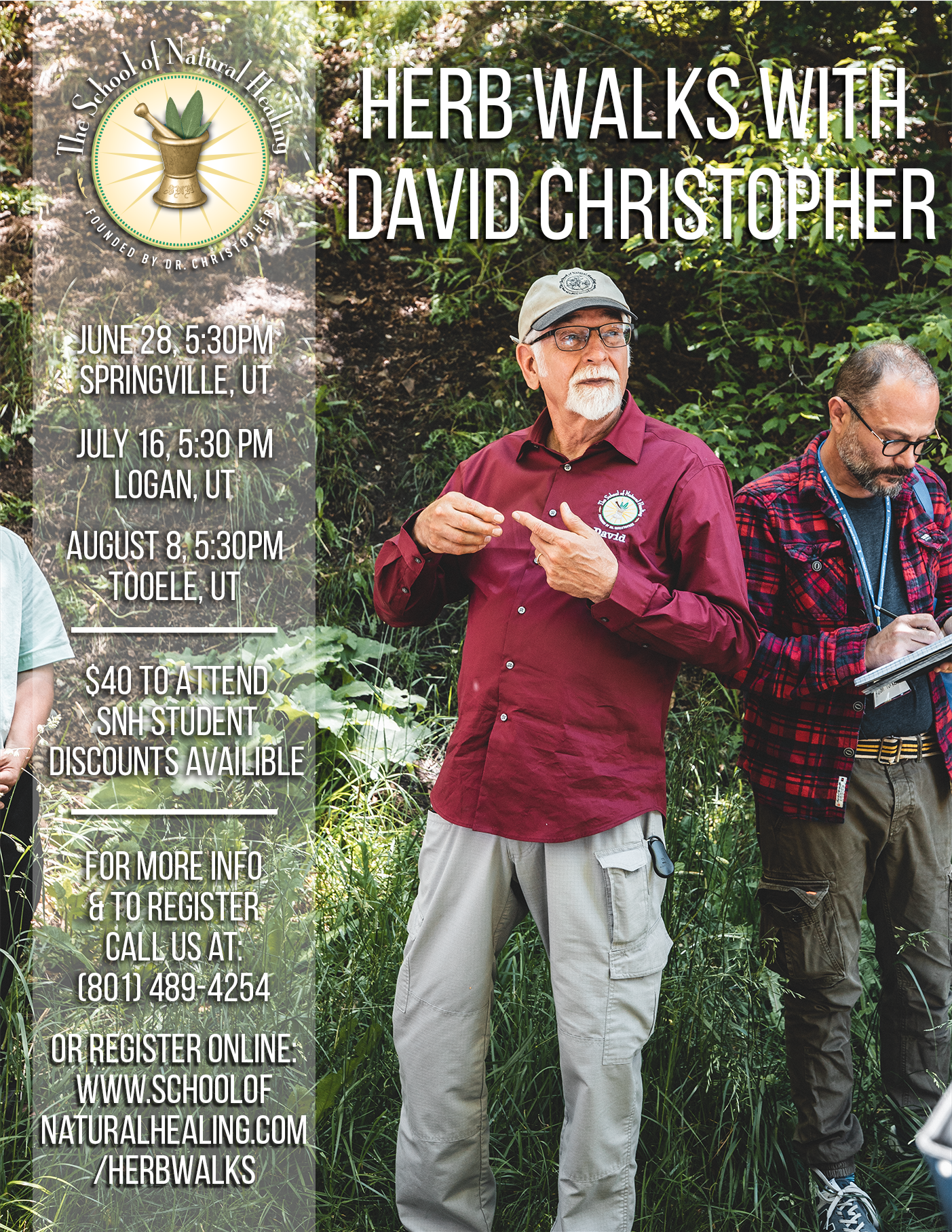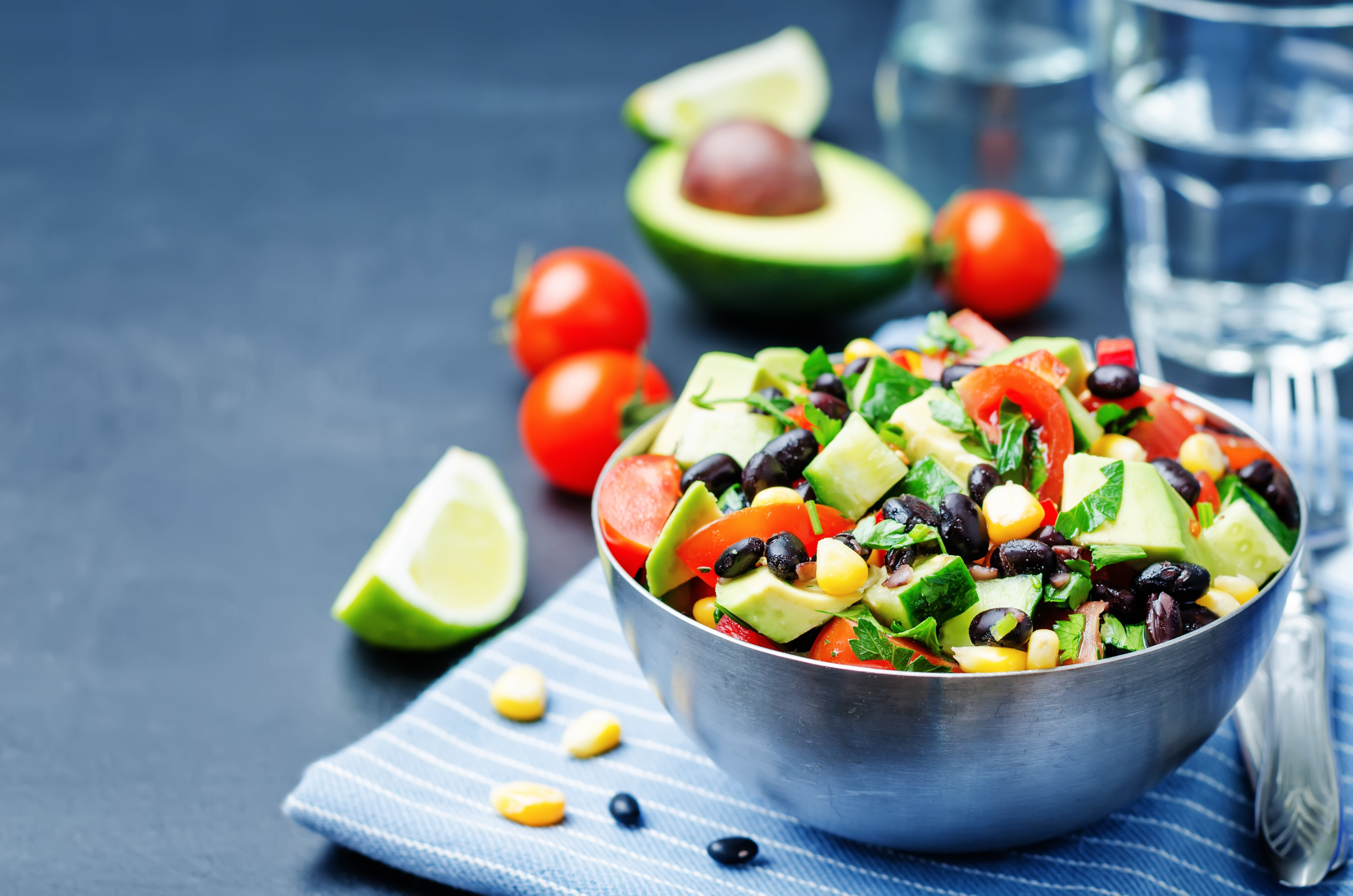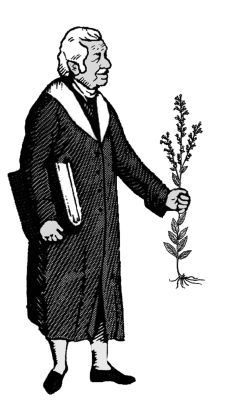What Did You Find on Your Herb Walk
Published: Wed, 07/17/19
July 17, 2019
What Did You Find on Your Herb Walk Jo Francks, M.H.
A great way to learn more about herbs is to learn to identify those growing in your area. You don’t have to go too far from home to find plants that are useful. One of Dr. Christopher’s favorite things to say was to use what was growing under your own fig tree, meaning in your own backyard or the area where you live.
.jpeg)
If you have an herb identification book then take it with you and start learning what you can about the plants you see. Try your own yard first, then a vacant lot where you will find many weeds. One person’s weed is another person’s medicine. Some you might find in your own yard are dandelion, plantain, red clover and alfalfa. You might find in a vacant lot burdock, yellow dock, wild carrot, wild lettuce or milk weed. If you make it a goal to learn an herb or two a week you will soon have a good knowledge of many herbs and what they are good for.
Other ways to identify plants are apps for your phone where you can take a picture and the app will try to identify the picture. You can do an internet search or use an extension agent or local botanist.
This week see if you can find a new plant that you haven’t paid attention to before and identify it. Do some research to see if it has some medicinal value. Start a journal and include pictures of the plant, what it is used for and notes about your own experience with it.
A good herb to start with is dandelion. This is a plant familiar to most people who have a backyard. The yellow flowers turn into puff balls which are the seeds and they catch the wind and plant themselves wherever they land. Dandelion leaves are well known to be diuretic and very nutritive. They make a good addition to a salad or green smoothie. The flowers are edible and have similar properties to the leaves. The roots are a good herb to help the liver or to roast and use as a coffee substitute.
Take advantage of the summertime and get out and identify the wonderful plants around you. We hope you are enjoying your summer.
Jo Francks is a Master Herbalist working at The School of Natural Healing.
Printable Version: http://herballegacy.com
If you missed an article be sure to visit http://www.herballegacy.com and click on Articles. Also, take advantage of David Christopher's Radio Show (see Resource Links below for more information).
David Christopher is now on Twitter!
You can follow David @DChristopherMH
Herbal Resource Links
This newsletter is sent by permission only - you can unsubscribe quickly and easily by clicking the link below.
.


A Healthier You Radio show is back!
Listen live every Monday morning at 11:30 Mountain Time.
Click here for the link to listen to our live show
David Christopher is now on Twitter!
You can follow David @DChristopherMH
Cucumber Salad
2 cucumbers peeled and chopped
2 cups cherry tomatoes halved
1/2 red onion minced
1/4 cup cilantro chopped
1 avocado diced
1 15 oz. can of black beans drained and rinsed
Juice of 2 limes
1 tbs. chopped fresh dill leaves
Combine all ingredients in a large bowl and pour lime juice over salad. Add salt and pepper to taste.
Recipe by Jo Francks
Printable Version: http://herballegacy.com

2 cucumbers peeled and chopped
2 cups cherry tomatoes halved
1/2 red onion minced
1/4 cup cilantro chopped
1 avocado diced
1 15 oz. can of black beans drained and rinsed
Juice of 2 limes
1 tbs. chopped fresh dill leaves
Combine all ingredients in a large bowl and pour lime juice over salad. Add salt and pepper to taste.
Recipe by Jo Francks
Printable Version: http://herballegacy.com
Herbal Resource Links
- Herbal Legacy - http://www.herballegacy.com - Our free information website
- The School of Natural Healing - http://www.snh.cc - Quality Education since 1953
- Christopher Publications - http://www.christopherpublications.com - Dr. Christopher's books and more
- Christopher Websites - http://www.christopherwebsites.com - Find all Christopher websites and other great resources
- A Healthier You Radio Show - http://www.ahealthieryouradio.com - Free weekly radio show
This newsletter is sponsored by:
The School of Natural Healing: http://www.snh.cc
Christopher Publications: http://www.christopherpublications.com
The School of Natural Healing: http://www.snh.cc
Christopher Publications: http://www.christopherpublications.com
NOTICE: All information in this newsletter is given out as information only and is not intended to diagnose or prescribe. For our official Disclaimer, Biological Individuality, Important Notice & Terms of Use please see: http://www.herballegacy.com/Disclaimer.html
This newsletter is sent by permission only - you can unsubscribe quickly and easily by clicking the link below.
.

